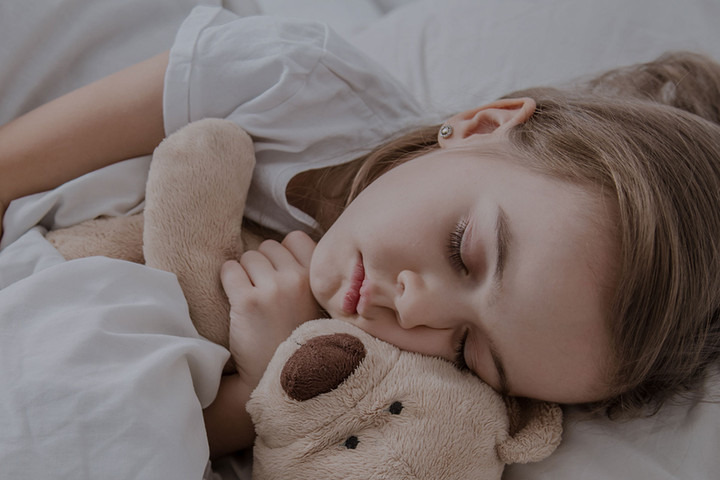The Science of Children's Sleep: Understanding Their Unique Needs
Posted by SleepSense on 3rd Oct 2023
Sleep is a fundamental aspect of a child's development and overall well-being. As parents and caregivers, understanding the science of children's sleep and their unique sleep needs is crucial. In this article, we'll delve into the world of children's sleep, exploring their evolving requirements at different stages of growth and development.
The Basics of Children's Sleep
Before we dive into the specifics of children's sleep, let's cover some basics. Sleep is not a uniform experience throughout life; it evolves as we age. Understanding the differences between adult and child sleep patterns is the first step in comprehending children's unique sleep needs.
Children's sleep patterns are characterized by multiple sleep cycles, which consist of alternating periods of rapid eye movement (REM) and non-REM sleep. These cycles play a vital role in brain development, memory consolidation, and emotional regulation.
Sleep Needs by Age
Children's sleep needs vary significantly by age. Here's a breakdown of the recommended sleep durations for different age groups:
- Infants (0-12 months): Infants require the most sleep, with newborns needing 14-17 hours of sleep per day. As they grow, sleep duration gradually decreases to 12-15 hours.
- Toddlers (1-2 years): Toddlers need 11-14 hours of sleep, typically with one or two daytime naps.
- Preschoolers (3-5 years): Preschoolers thrive on 10-13 hours of sleep per night, including occasional naps.
- School-Age Children (6-12 years): School-age children benefit from 9-12 hours of nightly sleep.
- Teenagers (13-18 years): Adolescents should aim for 8-10 hours of sleep, although their changing circadian rhythms can make this challenging.
It's essential to note that individual variations exist, and some children may require slightly more or less sleep than the recommended averages.
The Role of Circadian Rhythms
Circadian rhythms, often referred to as the body's internal clock, play a significant role in regulating sleep-wake patterns. In children, these rhythms are still developing, which can lead to unique sleep challenges. A child's internal clock may differ from that of an adult, causing variations in sleep timing and duration.
For example, teenagers often experience a shift in their circadian rhythms, leading to a natural preference for later bedtimes and wake times. This shift can affect their ability to fall asleep early and wake up early for school.
Sleep Disorders in Children
Just like adults, children can experience sleep disorders that disrupt their sleep patterns and quality. Common sleep disorders in children include:
- Sleep Apnea: Characterized by interrupted breathing during sleep, sleep apnea can lead to daytime sleepiness and behavioral issues.
- Night Terrors: Night terrors cause sudden awakening with intense fear and confusion, often in the first few hours of sleep.
- Insomnia: Insomnia in children may result from anxiety, stress, or irregular sleep routines.
Recognizing these sleep disorders and seeking appropriate medical guidance is crucial to address any underlying issues affecting a child's sleep.
Impact of Technology on Children's Sleep
In today's digital age, electronic devices and screen time have become an integral part of children's lives. However, excessive use of screens, particularly before bedtime, can interfere with sleep. The blue light emitted by screens can suppress the production of melatonin, a hormone that regulates sleep.
To mitigate the impact of technology on children's sleep:
- Establish screen-free zones and times, especially in the hour leading up to bedtime.
- Encourage relaxing activities like reading or listening to calming music before sleep.
- Set parental controls to limit screen time and monitor content.
Importance of Consistent Bedtime Routines
Consistent bedtime routines are essential for children of all ages. These routines signal to the child's body that it's time to wind down and prepare for sleep. A typical bedtime routine may include activities such as brushing teeth, reading a bedtime story, and dimming the lights.
By establishing consistent routines, children develop a sense of security and predictability around bedtime, making it easier for them to transition into sleep.
Nutrition and Sleep
Diet plays a significant role in a child's sleep quality. Certain foods and nutrients can promote better sleep, while others may disrupt it. To support your child's sleep:
- Offer a balanced diet that includes fruits, vegetables, whole grains, and lean proteins.
- Limit sugary snacks and caffeinated beverages, especially in the evening.
- Encourage healthy hydration throughout the day but reduce fluid intake close to bedtime to minimize nighttime awakenings.
Sleep Tips for Parents
As parents and caregivers, there are several practical steps you can take to ensure that your child gets the sleep they need:
- Establish a Consistent Sleep Schedule: Set regular bedtimes and wake times, even on weekends.
- Create a Comfortable Sleep Environment: Ensure that the bedroom is conducive to sleep, with a comfortable mattress, appropriate bedding, and a dark, quiet atmosphere.
- Encourage Physical Activity: Promote regular physical activity during the day, but avoid strenuous exercise close to bedtime.
- Be Mindful of Bedtime Snacks: Provide a light, healthy snack if your child is hungry before bed, but avoid heavy meals.
In conclusion, understanding the science of children's sleep and their unique sleep needs is essential for parents and caregivers. By considering the factors that influence children's sleep, recognizing potential sleep disorders, and implementing healthy sleep habits, you can help ensure that your child enjoys restful and rejuvenating sleep, supporting their overall health and well-being.
Disclaimer: The information provided in this article is for informational purposes only and should not replace professional medical advice. If you have concerns about your child's sleep, consult a healthcare professional for guidance.
Image by pvproductions on Freepik

